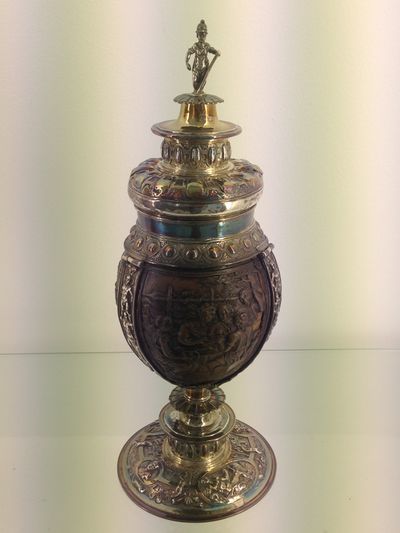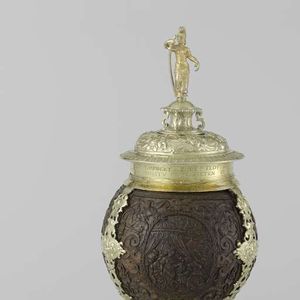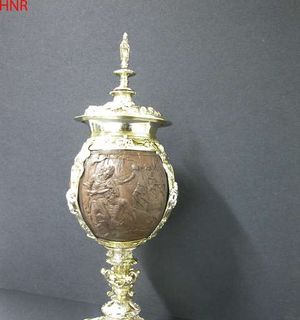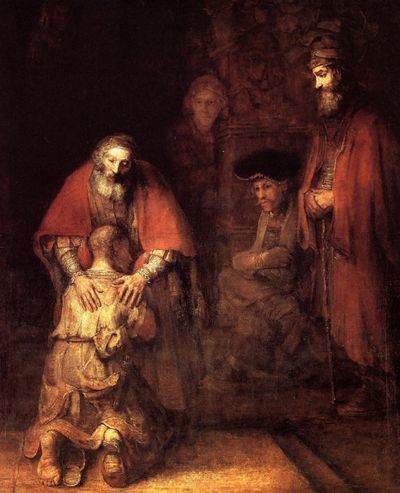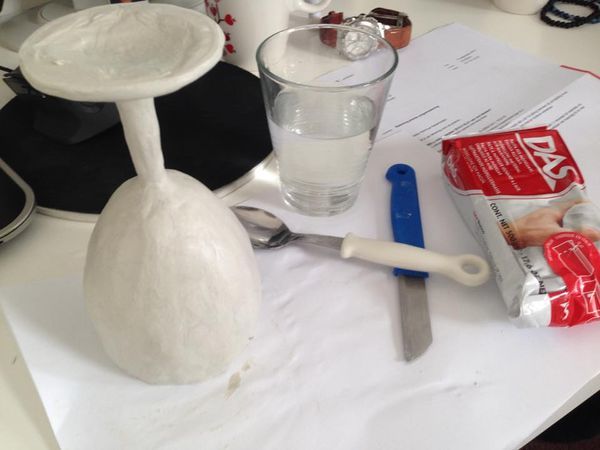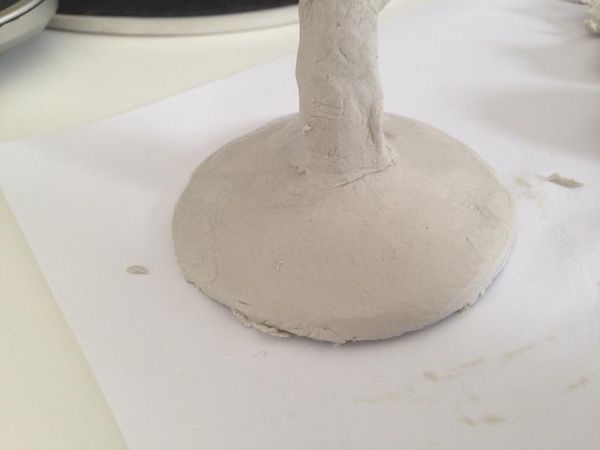Practice & Research
The Object
While I was in the Boijmans Museum for choosing 8 different objects to show Jon in the introduction week on the first day, I photographed this item which I really liked. I thought that this object was very interesting to know more about. When I saw it the first time, i had actually no idea what this could be. Maybe a sort of box? I could not read the drawings on this object very well. I could see that there were drawings, but not what they are about. Also the silverwork around the object was very shiny and detailed.
When I talked about this object with Jon he told me that this object was made out of coconut wood. I decided to do some research and this is what I found. This objects is called a 'kokosnootbeker'; a coconutcup, made by an unknown artist around 1550-1600. Apparently these coconutcups were often made around the 16th century. I found out that the Rijksmuseum has some of these cups too.
I wanted to know some more about the details of the object. On all coconut cups we can see carved images in the coconut wood. I found out that there's a story on the cup from the Boijmans museum. It's the biblical story about the 'Verloren Zoon'/'Lost Son'/'Lost Sheep'. There are actually three images on this cup around; The departure, the stay and the return. This is a story from 'Lucas 15: 11-32'.
I know that coconut is a very exotic product, which was often imported from Africa, Central America and Asia in the 16th century. What i find so strange about this is that they made such common stories on these rare materials which were hard to get.
What I read is that the story of the Lost Son is often seen as a 'negrospiritual'. That's a traditional religious folk music from North African slaves; often refers to the Old Testament. By singing these songs, the slaves comforted themselves for the pityfully situations in which they lived in. As we all know, the 16th century was all about shipping, trading and slavery in the Western world.
I find this story so sad but yet so interesting. I want to make the stories visible behind all the sorrow of the slaves; which is actually the bad side of these glorified objects of the western world. And tell the stories behind this glorified object.
23/09/2015
I have experimented with clay on a wineglass. Later I want to try to bring relief in the clay.
01/10/2015
What is your craft? (define your discipline, method or approach)
What are the tools and media of your craft?
What are the borders of this practice? (what new media technologies have arisen / what is its future of the field))
Connect to a historical discourse and give concrete examples (images too please) of inspiring historical and contemporary practitioners
